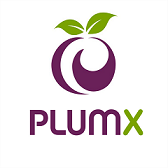Relationship between Inflation Components and Manufacturing Sector output in Kenya
Abstract
This paper examines the causal linkages and impact of underlying inflationary pressures, specifically core inflation (excluding volatile items), energy inflation and food inflation on the output growth of the manufacturing sector in Kenya over the most recent available period. Using updated annual and quarterly data from the Kenya National Bureau of Statistics and other sources (covering up to 2024/25), we employ a vector-error-correction (VEC) framework to identify long-run equilibrium relationships and short-run dynamics between inflation components and manufacturing output growth. Preliminary findings show that during 2024, the manufacturing value-added growth in Kenya slowed to approximately 4.4%, up from 2.1% the prior year. Meanwhile, headline consumer-price inflation stood at around 4.5% in 2024, with core inflation remaining subdued at about 2.5%-3.0% in early 2025, while non-core inflation (food and energy) rose to double-digit levels (≈9.2% in August 2025). The econometric results suggest that food and energy inflation exert a statistically significant negative effect on manufacturing output growth both in the short run and in the long run, and that core inflation also plays a meaningful role in the long‐run equilibrium. The findings underscore the importance of disaggregating inflation components for industrial policy and monetary policy formulation in Kenya. Policy recommendations include stabilising food and energy prices, strengthening the manufacturing sector’s resilience to inflation shocks, and refining the inflation‐targeting framework to account for sectoral linkages.
Downloads
References
Akinsola, F.A., & Odhiambo, N.M. (2017). Inflation and Economic Growth: A Review of the International Literature. Comparative Economic Research, 20(3), 42–56.
Bans-Akutey, M., Deh, W., & Mohammed, F. (2016). What is the Effect of Inflation on Manufacturing Sector Productivity in Ghana? MPRA Paper No. 75145.
Central Bank of Kenya (2025). Monetary Policy Statement, September 2025. Nairobi: CBK.
Durevall, D., & Sjö, B. (2012). The Dynamics of Inflation in Ethiopia and Kenya. AfDB Working Paper 151.
Green, H. (2002). Econometric Analysis, 5th ed. New Jersey: Prentice Hall- Upper Saddle River
Gokal, V., & Hanif, S. (2004). Relationship between inflation and economic growth. Economics Department Working Paper No. 2004/04, Reserve Bank of Fiji.
Kazidi, D. M., & Mwakanemela, K. (2013). The impact of inflation on economic growth in Tanzania (1970–2010). International Journal of Economics and Finance, 5(8), 136–144
Kenya National Bureau of Statistics (2025). Economic Survey 2025. Nairobi: KNBS.
Mubarik, A. (2005). Inflation and Growth: An Estimate of the Threshold Level of Inflation in Pakistan. SBP Research Bulletin, 1(1), 35–43.
Odondo A. J (2021): Dynamics of Core Inflation, Energy Inflation, Food Inflation and Manufacturing Sector Output Growth in Kenya: Econometric Analysis of Causality and Effects, Journal of Economics and Sustainable Development, 12 (2), 40-49
Rubene, I. (2018). The Role of Energy Prices in Inflation Outcomes: A Cross-Country Perspective. ECB Economic Bulletin, Issue 7.
Shankar, S.R. (2019). Food Inflation and Its Adverse Effects on the Economy. DittoTrade Academy.
Were, A. (2016). Manufacturing in Kenya: Features, Challenges, and Opportunities. Supporting Economic Transformation Programme.
World Bank (2024). Kenya Economic Update: Enhancing Industrial Competitiveness. Washington DC: World Bank Group.
Copyright (c) 2025 Alphonce Juma Odondo, PhD

This work is licensed under a Creative Commons Attribution 4.0 International License.




























